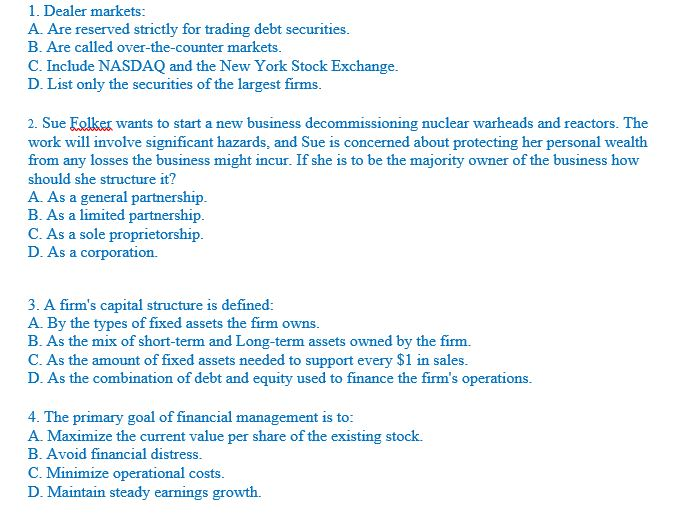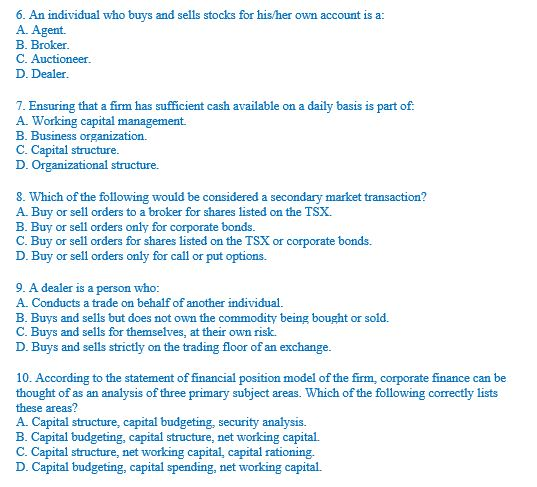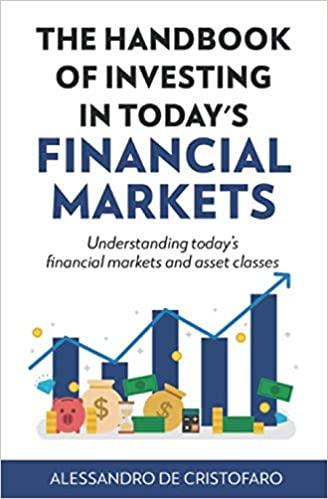

1. Dealer markets: A. Are reserved strictly for trading debt securities. B. Are called over-the-counter markets. C. Include NASDAQ and the New York Stock Exchange. D. List only the securities of the largest firms. 2. Sue Eelkes wants to start a new business decommissioning nuclear warheads and reactors. The work will involve significant hazards, and Sue is concerned about protecting her personal wealth from any losses the business might incur. If she is to be the majority owner of the business how should she structure it? A. As a general partnership B. As a limited partnership. C. As a sole proprietorship. D. As a corporation 3. A firm's capital structure is defined: A. By the types of fixed assets the firm owns. B. As the mix of short-term and Long-term assets owned by the firm. C. As the amount of fixed assets needed to support every $1 in sales. D. As the combination of debt and equity used to finance the firm's operations. 4. The primary goal of financial management is to: A. Maximize the current value per share of the existing stock. B. Avoid financial distress. C. Minimize operational costs. D. Maintain steady earnings growth. 6. An individual who buys and sells stocks for his/her own account is a: A. Agent B. Broker. C. Auctioneer D. Dealer. 7. Ensuring that a firm has sufficient cash available on a daily basis is part of A. Working capital management B. Business organization. C. Capital structure. D. Organizational structure. 8. Which of the following would be considered a secondary market transaction? A. Buy or sell orders to a broker for shares listed on the TSX. B. Buy or sell orders only for corporate bonds. C. Buy or sell orders for shares listed on the TSX or corporate bonds. D. Buy or sell orders only for call or put options. 9. A dealer is a person who: A. Conducts a trade on behalf of another individual. B. Buys and sells but does not own the commodity being bought or sold. C. Buys and sells for themselves, at their own risk. D. Buys and sells strictly on the trading floor of an exchange. 10. According to the statement of financial position model of the firm, corporate finance can be thought of as an analysis of three primary subject areas. Which of the following correctly lists these areas? A. Capital structure, capital budgeting, security analysis. B. Capital budgeting, capital structure, net working capital. C. Capital structure, net working capital capital rationing. D. Capital budgeting, capital spending, net working capital








